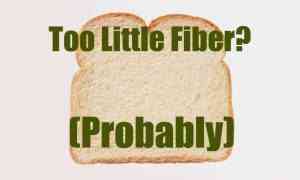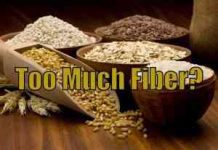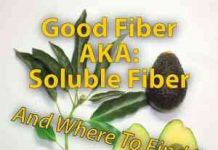The Dangers of Eating Too Little Fiber
Rider Nutrition is a balancing act. Lean too much to one extreme, and you risk adverse side effects; lean too much towards the other extreme, and you risk even more side effects. In a previous article, I touched on the detriments of overeating fiber. In today’s article, I discuss the disadvantages of eating too little fiber.
 The Problems With Too Little Fiber In Your Diet
The Problems With Too Little Fiber In Your Diet
The lack of sufficient fiber in a diet is a common occurrence among all demographics, athletes included. For riders and racers, not eating enough fiber can lead to several symptoms that affect not only overall health but also performance on the bike. Listed below are the most common problems riders face with eating too little fiber.
Low Blood Sugar Levels. This is one of the more dangerous side effects of not getting enough fiber in your diet. Low blood sugar levels can lead to a combination of the following symptoms: nausea, dizziness, weakness, blurred vision, and anxiety. If you’ve ever experienced any of these, much less a combination, then you know how they can affect your riding performance in a negative way – poor decision making, slower reaction times, etc.
Sluggishness. If you’re not getting enough grains and vegetables, there’s a good possibility that you’re also not eating enough carbohydrates. If that’s the case, then you will most likely feel tired and sluggish on the track, which again leads to poor decision making, slower reaction times, and a lack of focus.
Weight Gain. This is the one that will sneak up on you if you’re not careful. Fiber makes you feel fuller after a meal. If you’re eating too little fiber, you’ll either eat more at dinner or start snacking again soon after. With those habits, weight gain is sure to follow. Your weight affects your speed and performance on the track. It needs to be kept in check, always.
How To Make Sure You’re Eating Enough Fiber
The trick to avoiding the issues associated with a diet low in fiber is to become conscious of how much you’re consuming daily as part of your rider nutrition plan. It’s that simple.
The recommended daily intake is between 20-35g. You don’t have to be exact with it. As long as you stay in, or close, to that range, you’ll be fine.

Foods high in fiber include bran cereal, barley, raspberries, navy beans, peas, flaxseed, and mustard greens.
But that’s just the tip of the iceberg. Below, I’ve included a link to a list of foods high in fiber. Pick a few from the list, and make it a point to start eating them daily.
The 13 Best Foods Loaded With Fiber
In Summary
Diets with too little fiber can decrease performance on the track. Low blood sugar, sluggishness, and weight gain are all side effects of not eating enough fiber. And, they can lead to a series of complications, like nausea, dizziness, weakness, and blurred vision.
The key to ensuring you’re getting enough in your diet is to make a conscious effort to keep track of the foods you eat in a rider nutrition plan and purposefully start consuming foods high in fiber. The recommended daily intake is 20-35g.
You can start by incorporating foods like peas, navy beans, and mustard greens, and eventually branch out to include a wider range of high-fiber foods.
If you have any questions or anything to add, please leave them in the comments or on our FaceBook page!
Keep Reading – Too Much Fiber In Your Diet?




